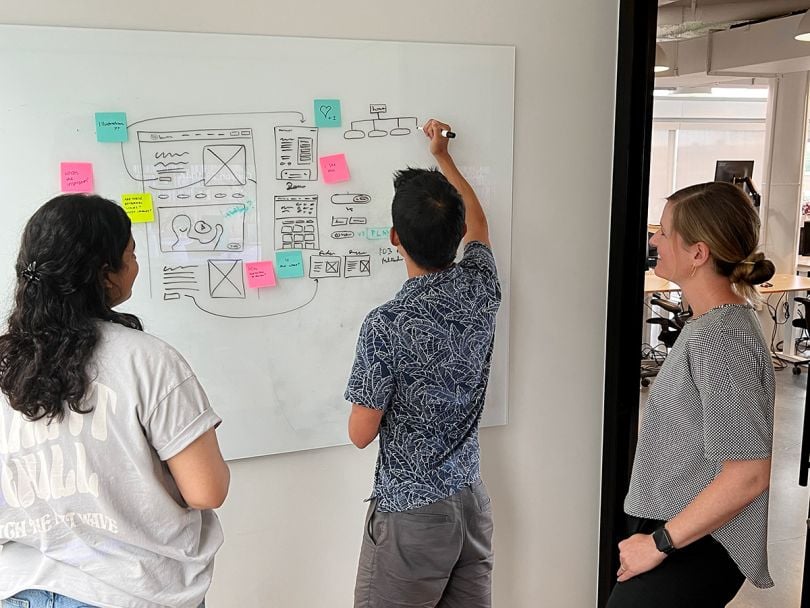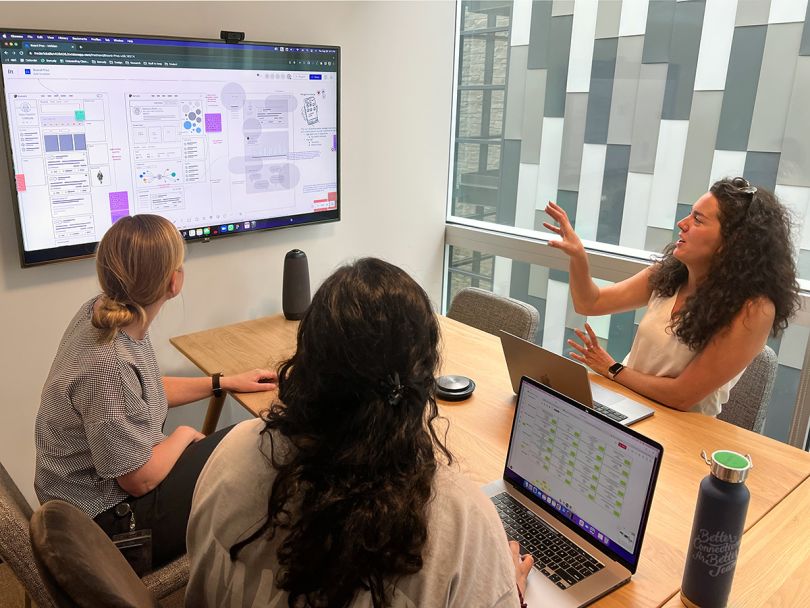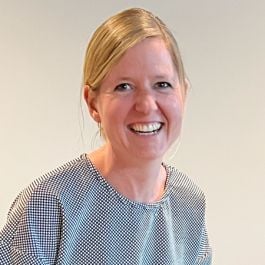The best design isn’t created in a silo — no matter how talented the design team might be. Without the insights and expertise of other departments, creative prowess and internal vision is likely to fall short of meeting customer expectations.
In a Harvard Business Review article on the need for cross-silo leadership, authors Amy C. Edmondson, Sujin Jang and Tiziana Casciaro wrote, “The integrated solutions that most customers want — but companies wrestle with developing — require horizontal collaboration.”
Breaking departmental barriers and building bridges for cross-functional leadership can lead to more cohesive efforts and greater success, and it’s an approach the teams at Bonusly have embraced to guide the development of their employee recognition platform.
“People have a need to feel seen and valued at work,” said Judith Bartels, head of research and design. With its web and mobile apps or open API, Bonusly helps companies improve the employee experience through peer-to-peer recognition, a public recognition feed and rewards in the form of gift cards. The platform allows managers and people teams to track analytics to improve their engagement strategies.
“We are all here to constantly improve how we work together, and we deeply believe in our product trio — design, product and engineering,” Bartels said.
Bonusly’s leadership team includes members from all three departments. Additionally, each department has design, product and engineering representatives to share expertise and collaborate cross-functionally.
Bartels explains that these product trios ensure alignment on “why we are building something, what needs to be prioritized and how the experience will come to life” in order to develop the best product possible. And it’s an important product to get right, as Bonusly is evolving the ways leaders are able to recognize and celebrate their employees in the remote environment.
Built In spoke with Bartels to learn more about what Bonusly is building and how she and the product and engineering team leaders break down silos to achieve collaborative results.

What’s your role, and what is your team working on right now?
I’m the head of research and design and partner directly with our head of product and our head of engineering — we’ve been referred to as BB&J, for Brian, Brink and Judith, which might be an indication of our close partnership. I also partner with our head of marketing since the visual designers on my team support marketing efforts.
Currently, we are in the middle of refreshing our brand, redesigning our marketing website and implementing a new CMS. We are also renewing our front end on the product side and building a design system from scratch.
What gave rise to the product Bonusly is building, and what impact does it have on its customers?
Both the pat on the back and the building of relationships has become more difficult in hybrid and distributed teams, and Bonusly is a place where people can give each other recognition, celebrate birthdays or anniversaries, and treat themselves with the points they receive or by redeeming a company reward.
As we grow, we are expanding the ways teams can build connections, cross-functionally and with employees’ immediate managers. We know the connection employees have with their manager is vital to professional growth and has a lot to do with retention. We are heavily investing in the ability to show this impact with analytics so that people can see how their team culture is improving and human resources can understand why something is working well in one location or department and what another team can learn.
“As we grow, we are expanding the ways teams can build connections, cross-functionally and with employees’ immediate managers.”
What role have you played in developing Bonusly’s product, and what processes and tools does your team use?
I joined Bonusly almost a year ago in the first design leadership role and have grown the design team to include a full-time user researcher. My team stretches across product and marketing and we often collaborate with the go-to-market team to plan new releases. We’ve added a discovery track to our product squads to do research, run experiments and constantly innovate during our product delivery. We have a clear way to measure product success and we talk to customers regularly.
Among the tools we use, Product Signals helps us seamlessly collaborate with our customer success and sales teams — it’s where they can input any feature request from customers and prospects. Another is Figma Tokens, which helps us create a unified design system for Bonusly.

What obstacles has your team encountered, and how do you successfully overcome them?
Bonusly has gone through tremendous change over the last year, especially on the leadership team. With new team formations, we’ve had challenges with alignment and new processes.
What helps is that our culture is rooted in six company values. I especially like our “default to transparency” and “go get results” values. Being open and transparent about the changes and challenges and hearing feedback from the team has helped us navigate transitions. The “go get results” value is a good reminder to just go for it. If an employee sees something that needs improvement, they don’t have to wait for the new leader to make it happen; they can take action themselves.
What makes your workplace unique?
While we are a Series A startup with just over 100 employees, Bonusly’s approach to human resources is more thought-out than anywhere else I’ve worked. As a startup in the HR space, we want to do things right ourselves, and we constantly experiment on how to get better at it. This includes pay transparency and continuous improvement of our hiring and performance management processes. It also includes our focus on DEI, from sourcing diverse candidates to reducing bias. We are striving to create an environment where people can bring their whole selves to work, and we are especially welcoming to the LGTBQA+ community. Just in my time here, we’ve supported two colleagues changing their first names and pronouns.
Bonusly’s product brings positivity and fun to workplaces, and as a company, we reflect that with a positive and fun culture. The way we connect is intentional, from our first-ever in-person retreat this summer to our virtual team events.






